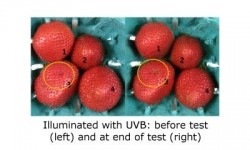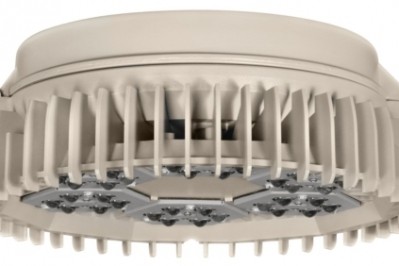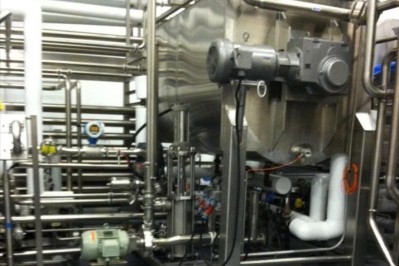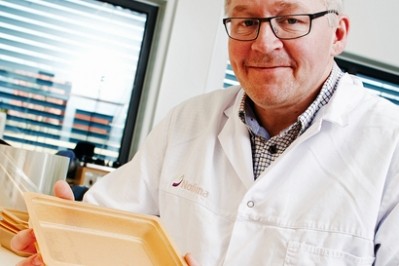UV light technique can double berry shelf life, say researchers

The team used a device incorporating light-emitting diodes (LEDs) that emit UV at wavelengths found in sunlight transmitted through Earth's atmosphere.
They used strawberries to demonstrate the new approach to slowing rot which they claim can double berry shelf life.
‘Berry good’ for shelf life
Results showed the UV-treated berries had their shelf life extended twofold—nine days mould-free—over darkened berries, as judged by weight, moisture content, the concentration of select phytochemicals, visible damage and mould growth.
The findings are significant because previous attempts using traditional UV light sources for storage of produce resulted in severe drying, and it was unknown if the advantages of long exposure to low-level UV light would be effective against rot.
They demonstrated that low irradiance ultra-violet light directed at strawberries over long exposure periods at low temperature and very high humidity—typical home refrigerator conditions—delays spoilage.
"UV-LEDs presented the opportunity to try low power devices that work well in the cold and can be engineered to work in small spaces such as refrigerator compartments," said lead USDA researcher Steven Britz.
Using strawberries purchased from a local supermarket, Britz's team placed one batch in a dark refrigerator and one batch in a refrigerator exposed to UV-LEDs.
Tuning emitted light
The research team from the US Department of Agriculture's (USDA) Food Components and Health Laboratory in Beltsville, Maryland, and Sensor Electronic Technology Inc. (SETi) in Columbia, South Carolina, will present their results at the Conference on Lasers and Electro-Optics next week.
LEDs are now commonplace thanks to their long life and energy efficiency, as well as their ability to span the wavelength range from near UV to infrared but the full UV spectrum had previously presented challenges for LED manufacturers.
SETi developed a special technology to fabricate UV LEDs across the UV spectrum from UVA to UVC.
This flexibility allowed them to tune the emitted light to the most effective wavelengths.
"These findings are expected to have a major impact on the appliance business to extend the shelf life and preserve nutritional value of fresh produce while reducing waste and saving money for every household," added Remis Gaska, president and CEO of SETi.











